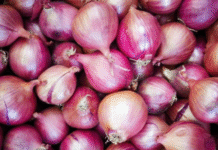Rice prices: A curious comparison – The answer is right next door

When the government in Bangladesh is well aware of the crisis and is also saying that it shares the concerns of rice farmers counting losses, it would not be a bad idea to compare how rice price issues are well tackled in a neighbouring country
At a time when rice farmers in Bangladesh are crying foul at the extremely low prices they are being offered for their produce in the current Boro season, it is all quiet in the Indian state of West Bengal as farmers there are content with a government-provided support price.
When the government in Bangladesh is well aware of the crisis and is also saying that it shares the concerns of rice farmers counting losses, it would not be a bad idea to compare how rice price issues are well tackled in a neighbouring country.
If the answer is there right next door, there’s no point clamouring for a solution or reinventing a remedy.
In the current fiscal year (2018-19), farmers in West Bengal are projected to produce 25 million tons of rice and the state government decided to procure over a fifth of it (5.2 million tons) under a public grain procurement scheme, thereby providing farmers with a minimum support price (MSP).
Earlier this year, when market prices were steady at 1,500 Indian Rupees (for each quintal/100 kg) of rice, the West Bengal government offered the MSP to farmers, fixed at 1,750 Indian Rupees by the Indian central government.
One has to keep in mind that fixing MSP rates are not arbitrary. There is a long well-established institutional mechanism in India to derive MSP rates for various farm commodities in different growing and harvesting seasons.
In India there has been a Commission for Agricultural Costs and Prices (CACP) since 1965. Under the Indian agriculture ministry, CACP works as a price commission with a mandate to recommend minimum support prices (MSPs) for 23 agricultural commodities.
CACP is not an all-bureaucrat body. Rather, it is comprised of one official member and two non-official members drawn from the farming community.
The commodities for which it recommends MSPs include, among others, rice, wheat, maize, sorghum, millet, barley, gram, lentil, soybean, sunflower oil, sugarcane, cotton, and jute.
Farmers in West Bengal grow up to 25 million tons of rice annually, 10 million less than what their counterparts in Bangladesh grow in three rice seasons – Aus, Aman and Boro – a year.
Now in Bangladesh’s case, the government has planned to buy only 1.85 million tons of rice from farmers, who as projections go, would grow over 35 million tons of rice in 2018-19. Here the public procurement volume roughly amounts to 1/19th of the total rice output.
Simply speaking, by procuring rice directly from farmers, West Bengal can dictate the market price of the staple. But in Bangladesh’s case with such a small scale market intervention government can’t dictate price terms for private rice traders and millers, thereby leaving impoverished rice farmers largely at the whim and mercy of millers and traders, who ultimately determine the market price, often to the disadvantage of small and marginal farmers.
In India’s case, a price commission (CACP) is in place that determines the support price and that body has farmer representation in it. But in the case of Bangladesh, an inter-ministerial body – Food Planning and Monitoring Committee (FPMC) – with no farmer representation whatsoever, decides all, that is, how much paddy or rice will be purchased and at what price, and so on.
Then again, in Bangladesh the food department often shies away from buying the promised volume of paddy or rice from farmers. For instance, in the last Boro season, the government planned to procure over one lakh tons of paddy directly from farmers, but in reality it bought less than a fourth of the amount.
This year too , the government’s paddy and rice procurement drive was supposed to begin April 25, but eventually the drive began in mid-May and till yesterday, the food department had bought only 28 tons of paddy.
Experts note that the government is leaving much room open in Bangladesh’s rice market for private traders and millers to rule, and often these two groups dictate price terms, much to the misery of poor rice farmers.
Taking the farmers’ woes into consideration, the government is now mulling over import restrictions but market sources say the government should have put in place a restriction much earlier on cheap rice imports from India. Over 2 million tons of rice entered Bangladesh in 2017- 2018 and still more rice is in the import pipeline. This is all happening at a time when Bangladeshi farmers have harvested back to back bumper crops of rice in the last Aman and Boro seasons.
Market sources consider giving subsidies in rice exports to be a poor proposition as the benefits, they fear, will not trickle down to the rice farmers. Rather, hoarders and millers will reap the benefits. Farmers can only benefit if the government increases its procurement target and buys grain directly from farmers.









